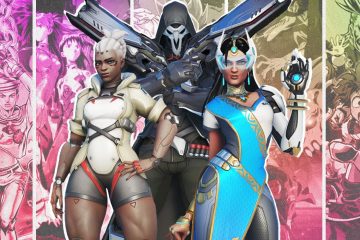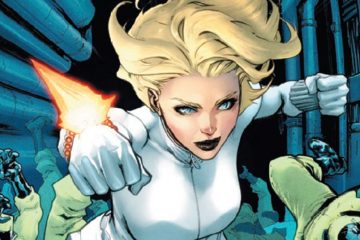Marvel presents the next installment in the Gang War saga, introducing a new faction in Deadly Hands of Kung-Fu: Gang War #1. Written by Greg Pak, illustrated by Caio Majado, with colors by Jim Campbell and letters by Travis Lanham, this three-part run is the first multi-part solo Shang-Chi title since Gene Luen Yang and Marcus To’s Shang-Chi and the Ten Rings (2022). After deposing his father, Zheng Zu, Shang-Chi becomes the Supreme Commander of the Five Weapons Society and the legendary Ten Rings, but their territory in Chinatown is threatened as a power struggle envelops the city.Deadly Hands of Kung-Fu: Gang War #1 opens with a flashback to two decades earlier in China, where a young Shang-Chi practices war games with his father. In present-day New York, Shang-Chi has to choose a tact for how to address the escalating gang conflicts, with agitators in Chinatown threatening the control of the Five Weapons Society. Using the lessons his father taught him, Shang-Chi will have to defeat his enemies — but some may lie closer than he expects.The art of Deadly Hands of Kung-Fu: Gang War #1 is bold and dynamic, with Majado working in heavy lines that decisively carve up the page. The inking is weighty, making atmospheric use of darkness and shadows, but occasionally goes beyond stylization and feels somewhat unwieldy and over the top. This trend carries to Majado’s character design. Although his figures are excellent, their faces often look uncanny in their proportions, with shading or hatching that feels out of place or totally fails to add dimension. At their worst, his character expressions undermine important story beats with their inability to convincingly translate emotion into expression, sometimes making an emotive moment feel surreally comedic. Most egregiously, there are points when Shang-Chi looks unrecognizable from panel to panel, even across a single page — his shape, nose, and mouth dimensions feel like they change rapidly, so inconsistent in their depiction that the reader feels grateful for Shang-Chi’s very distinctive costume. Although the fight scenes in this issue are short, they have a nice sense of weight and momentum, conveying Shang-Chi’s martial prowess with convincing dynamism despite the sequences being disappointingly limited.
Marvel presents the next installment in the Gang War saga, introducing a new faction in Deadly Hands of Kung-Fu: Gang War #1. Written by Greg Pak, illustrated by Caio Majado, with colors by Jim Campbell and letters by Travis Lanham, this three-part run is the first multi-part solo Shang-Chi title since Gene Luen Yang and Marcus To’s Shang-Chi and the Ten Rings (2022). After deposing his father, Zheng Zu, Shang-Chi becomes the Supreme Commander of the Five Weapons Society and the legendary Ten Rings, but their territory in Chinatown is threatened as a power struggle envelops the city.
Deadly Hands of Kung-Fu: Gang War #1 opens with a flashback to two decades earlier in China, where a young Shang-Chi practices war games with his father. In present-day New York, Shang-Chi has to choose a tact for how to address the escalating gang conflicts, with agitators in Chinatown threatening the control of the Five Weapons Society. Using the lessons his father taught him, Shang-Chi will have to defeat his enemies — but some may lie closer than he expects.
The art of Deadly Hands of Kung-Fu: Gang War #1 is bold and dynamic, with Majado working in heavy lines that decisively carve up the page. The inking is weighty, making atmospheric use of darkness and shadows, but occasionally goes beyond stylization and feels somewhat unwieldy and over the top. This trend carries to Majado’s character design. Although his figures are excellent, their faces often look uncanny in their proportions, with shading or hatching that feels out of place or totally fails to add dimension. At their worst, his character expressions undermine important story beats with their inability to convincingly translate emotion into expression, sometimes making an emotive moment feel surreally comedic. Most egregiously, there are points when Shang-Chi looks unrecognizable from panel to panel, even across a single page — his shape, nose, and mouth dimensions feel like they change rapidly, so inconsistent in their depiction that the reader feels grateful for Shang-Chi’s very distinctive costume. Although the fight scenes in this issue are short, they have a nice sense of weight and momentum, conveying Shang-Chi’s martial prowess with convincing dynamism despite the sequences being disappointingly limited.
#REVIEW #Marvels #Deadly #Hands #KungFu #Gang #War
Note:- (Not all news on the site expresses the point of view of the site, but we transmit this news automatically and translate it through programmatic technology on the site and not from a human editor. The content is auto-generated from a syndicated feed.))



